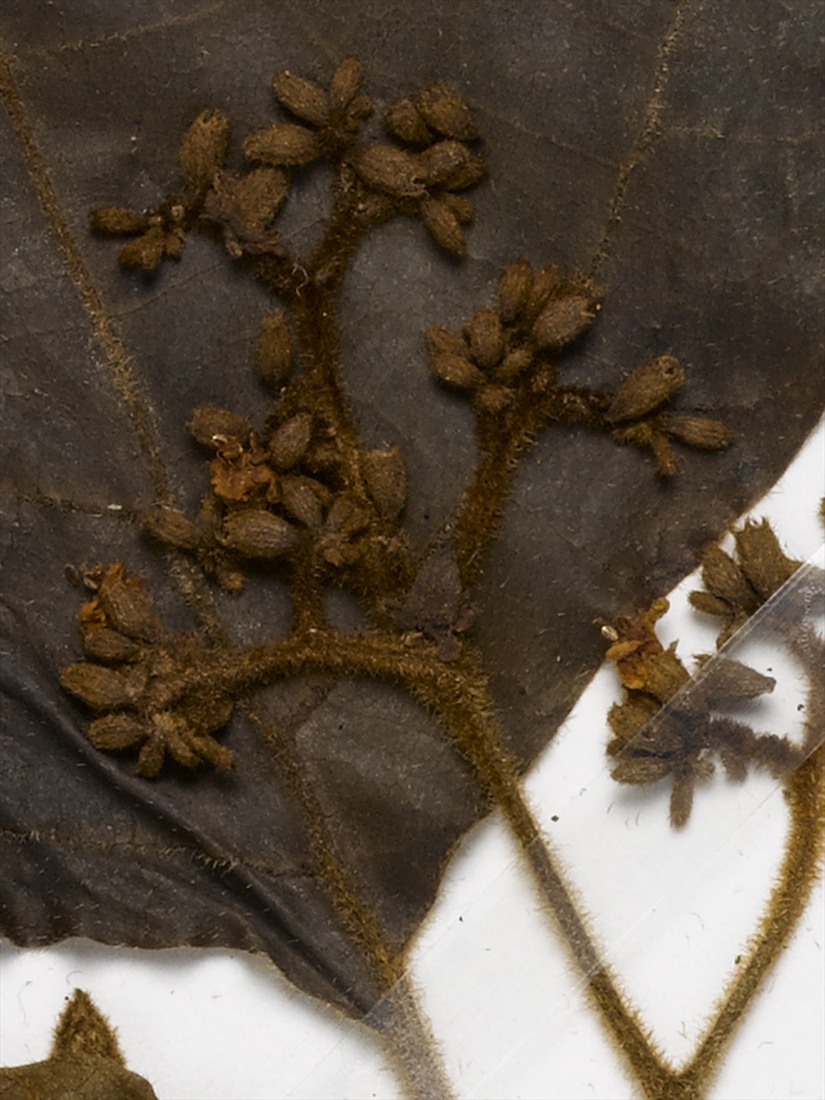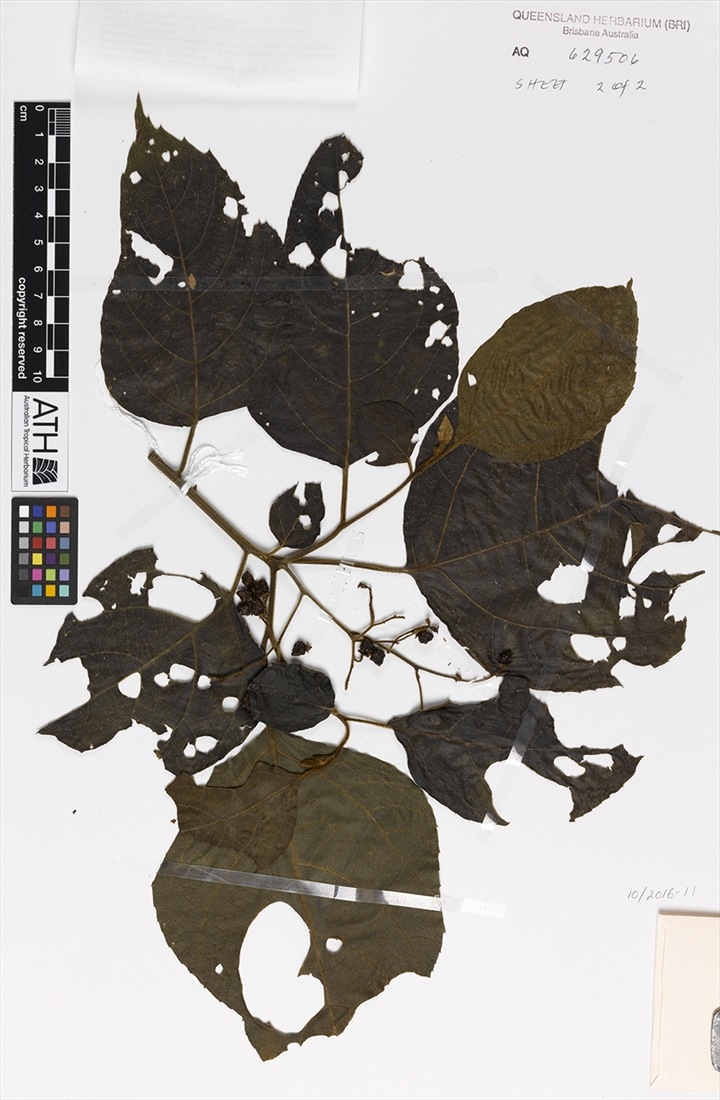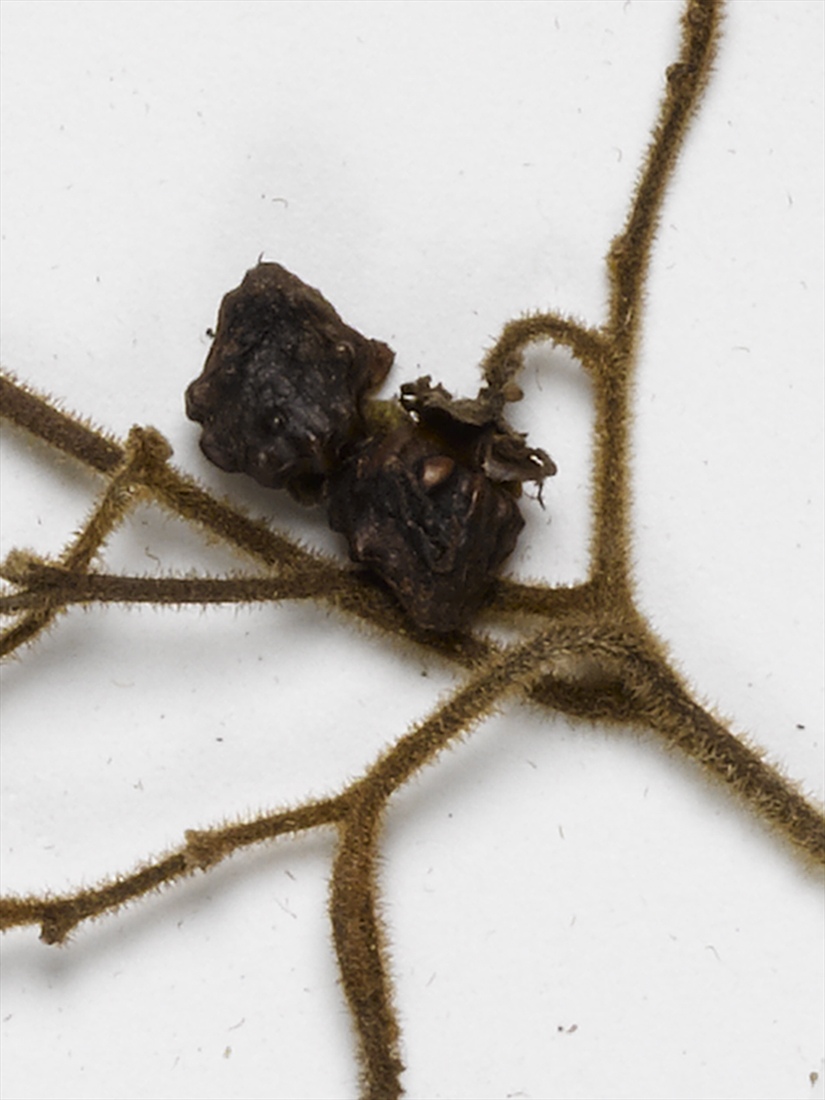Australian Tropical Rainforest Plants - Online edition
Cordia aspera G.Forst.




Forster, J.G. (1786), Florulae Insularum Australium Prodromus: 18 [tax. nov.].Type: "Tongatabu."
Small tree or scrambling shrub, up to 7 m tall. Young branches with greenish brown bark, indumentum of short white patent hairs (at 90 deg. to stem) and long yellow/brown tipped hairs.
Leaves simple, alternate. Petiole 0.7 cm long. Leaf blade ovate, (2.5-) 5-30 cm long, 1.5-16 cm wide, base truncate, oblique or rounded, margin finely serrate with a fine tip, apex acute to acuminate, rarely subobtuse; nerves (3-)4-6 on each side. Darker upper surface with sparse short stiff appressed hairs (white), sandpapery to the touch as a result of cystoliths either present in epidermal cells as tubercles or in the base of hairs, pale lower surface with long yellow brown tipped hairs, denser than upper surface, rather thin in texture. Leaf blades drying very dark with tinges of black. Domatia not present.
Inflorescence subcorymbose or paniculate, in the fork of uppermost branches or appearing terminal; peduncle up to 5 cm long. Pedicel less than 1 mm long. Calyx with 10 distinct longitudinal ribs, 5-lobed, 3-3.5 mm long, reddish tomentose; corolla 3 mm long, tube cylindrical, lobes revolute to 2 mm long, with paired appendages or folds on inner surface of petal lobe forming superficial hoods about half way along lobe, yellow or orange. Stamens with short filaments, anthers exserted from the corolla.
Seedlings not seen.
Considered naturalised in Australia with collections from CEQ, Conway National Park Airlie Beach; historical collections with broad location details are arbitrarily placed further north between Townsville and Cairns and Cape York but have not been recollected in those areas since. In Conway National Park found in disturbed rainforest along roadsides. Also widespread in Tropical Asia from Philippines east to Samoa Islands and south to Australia.
This species is easily distinguished by the prominent hairy ribs on the calyx (usually 10).
3593





